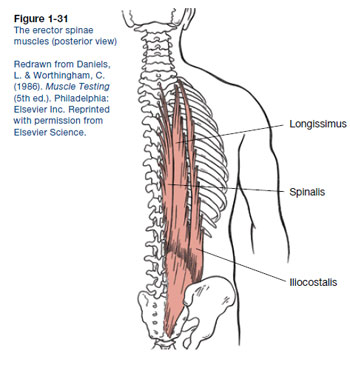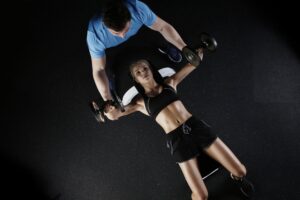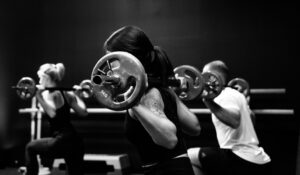A statement I usually hear from either clients first starting out or casual gym-goers is “I make sure to include a few ab exercises at the end to include my core for the session”. This is a huge commonality where exercises such as planks, crunches, medicine ball twists, etc., are added to the last 10 minutes of a person’s workout. This notion stems from the thinking that all their past exercises for that current session didn’t stimulate the core whatsoever. Is this true though? Do barbell squats not stimulate the core? Does a bench press, even with a mid RPE (rate of perceived exhaustion) level, not involve the core? In this article we’ll dive in to answering the interesting question Do Compound or Full Body Lifts Target Your Core?
Overview of Core Anatomy
Before we answer this, we must first understand the anatomy and physiology of the ‘core’ muscles we are working with. While there are a handful of muscles that work or assist for core activation, we are going to focus on the major or primary ones involved. Here is a quick diagram to visual see the area we are dealing with:
The major core muscles we are focusing on are as following:
- Rectus Abdominis
- Role: Trunk Flexion
- E.g.) Let’s you bend forward
- External & Internal Obliques
- Role: Trunk Rotation
- E.g.) Twist trunk left and right
- Transverse Abdominis
- Role: Trunk or abdomen Compression
- E.g.) Lets you bring your belly button inwards
- Erector Spinae
- Role: Trunk Extension
- E.g.) Bend backwards and stand up straight
- Multifidi
- Role: Spinal Stability
- E.g.) Stabilization of your spine and body when you stand or move
- Pelvic Floor Muscles
- Role: Stability and Support of Pelvic cavity organs
- Diaphragm
- Role: Main muscle for Respiration and assists in breathing
Other muscles include the glutes, lats, hamstrings, hip complex, etc., but these are all synergist muscles, i.e. they assist. As you look back now, be truthful with yourself and ask how many of those you actually knew. Probably not too many, or at least not all of them. That’s quite okay, as many don’t recognize them either as these are all more ‘deep’ muscles. The problem is that they are usually the most crucial for our well-being or movement. Now that we have a basic understanding of what’s involved, let’s get back to answering the question.
Direct or Isolation Core Exercises
Let us first go over what ‘direct core’ exercises are. Direct core exercises are exactly what they say they are; exercises focused on activating mainly the core musculature. Notice that I say mainly, and not only. The reason for this is because muscles never really work in isolation. The body is fully connected and there will always be another muscle or muscle group working in tandem to assist or counteract. Exercises here will be utilizing one of the primary mover’s functions, such as trunk flexion, rotation, etc.
Exercises in this domain can include:
- Crunches, sit- ups, jack-knives, straight-leg sit up
- These all work Trunk Flexion
- Planks, Reverse Plank Iso- Holds, Dragons/Lizards
- These all work Anti-Extension
- Side Bends, Medicine Ball wood chops, cable twists
- These all work Trunk Rotation
These are very straight-forward; they obviously work target the core (at varying levels of course). But what about non-direct core exercises?
Compound or Full Body Exercises
Now we shift to the other side of the spectrum. A compound movement is one that involves multiple muscle groups at the same time, to get an achieved movement or motion completed. For the most part, compound and full body exercises are usually pretty interchangeable. Now you may be asking, what are some examples of this type of movement?
There are a good amount of compounds but the well known ones are as following:
- Barbell Squat
- Muscles Involved: Quadriceps, Hamstrings, Glutes, Calves, Core, Hip Adductor/Abductor complex
- Barbell Deadlift
- Muscles Involved: Quadriceps, Hamstrings, Glutes, Core, Lats, Traps,Rhomboids
- Barbell Bench Press
- Muscles Involved: Pecs, Anterior Deltoids, Triceps, Rotator Cuff, Lats, Core
- Barbell Step Ups
- Muscles Involved: Quadriceps, Hamstrings, Glutes, Core, Calves, Rotator Cuff
- Barbell Cleans
- Muscles Involved: Quadriceps, Hamstrings, Glutes, Core, Calves, Lats, Rhomboids, Traps, Biceps, Deltoids
What do you notice about all of these exercises? They all work the core! That’s right; every single one of these utilize the core in one way or another. A little confused? Let’s get a detailed picture from one of them. Take a barbell squat. Most think all thats worked is the lower body musculature; mainly the quads and hamstrings. This is not the case. During the descent and ascent of a squat, your core is heavily utilized. Your core helps you stabilize your entire body while lifting heavy loads during both segments of this movement. Now as stated before, which core muscles are utilized more so than others is relative to the specific exercise. In the case of a squat, the Erector Spinae, Multifidi, and Transverse Abdominis are the key players here. We want full trunk stability here; both posterior spinal stability and abdominal pressure.
Intra-Abdominal Pressure & Bracing
Another very important concept is creating Intra-Abdominal Pressure (IAP) and Bracing. Intra-abdominal pressure is focused on breathing and it is when we use diaphragmatic breathing to increase as much tension within the abdominal cavity. This allows individuals to harness a greater amount of power and more importantly, trunk protection. Bracing is the tightening of all the musculature surrounding the abdomen and spine. Imagine one of your friends pretends to give you a blow to the stomach; your natural reflex would be to tighten the hell out of your core. That is exactly what bracing is. It produces safety and protection around the trunk. Both of these concepts are utilized in almost every compound movement. First comes the breathing (IAP), then follows bracing, and usually both of these happen prior to the movement (though bracing is usually utilized during the movement as well). When we deadlift, core activation begins upon pick up of barbell, and bracing continues through the entire movement; from ascent to descent.
So do compound or full body lifts target your core? The answer is a definitive YES! Your core gets utilized in some format or another in almost every compound or full body exercise. However, to say that compounds utilize a higher core stimulation than direct core exercises is false. The moral of the story is to have a good mix between compounds and isolation exercises to truly achieve a strong, stable and dense core.
I hope you guys enjoyed and thanks for reading! Please give a like and share if you were able to take something away from this! Cheers!







